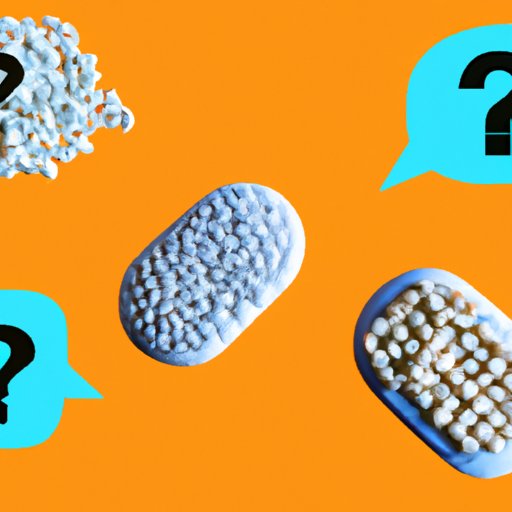
Introduction
Anxiety is a common condition that affects millions of people worldwide. It’s a feeling of worry, fear, or apprehension about future events or outcomes. Anxiety can manifest itself in various ways, including stress, nervousness, panic attacks, and physical symptoms. Many people who suffer from anxiety report experiencing physical symptoms such as nausea, vomiting, headaches, and dizziness, which can make them wonder if anxiety can make them feel sick.
In this article, we will explore the link between anxiety and physical illness. We’ll look at the science behind the mind-body connection and how anxiety can impact the body, as well as practical coping strategies and available treatment options to manage anxiety-related physical symptoms. We’ll also examine societal stigmas associated with anxiety and why it’s essential to break them.
The Mind-Body Connection: Understanding the Link Between Anxiety and Physical Illness
The mind-body connection is the link between our thoughts, emotions, and physical health. Scientific evidence confirms that anxiety can cause physical symptoms. Anxiety activates areas of the brain that regulate the stress response, leading to the release of stress hormones such as cortisol and adrenaline. An excessive amount of these hormones can negatively impact body systems, leading to physical illness and symptoms.
Furthermore, anxiety can weaken the immune system, making the body more susceptible to disease. Stress hormones, such as cortisol, can decrease immune cells’ activity, making it easier for viruses and infections to manifest. People suffering from anxiety may also engage in unhealthy coping mechanisms such as excessive alcohol or tobacco consumption, which can further weaken the immune system.
When Anxiety Makes You Physically Ill: Coping Strategies to Try
When experiencing physical symptoms, it’s essential to seek medical advice to rule out any underlying medical conditions. However, if no other health issues are present, the physical symptoms may indicate anxiety-related physical symptoms. Some practical coping strategies to try include:
- Deep breathing: Anxiety can increase heart rate and cause shallow breathing, leading to physical symptoms such as dizziness. Deep breathing can help relax the mind and reduce heightened anxiety levels.
- Mindfulness: Mindfulness focuses on being in the present moment and can help individuals refocus their thoughts and reduce anxiety levels.
- Exercise: Exercise releases endorphins, which help improve mood and reduce anxiety levels.
For individuals whose anxiety symptoms cause significant impairment, therapy or medication may be necessary. Therapy can help individuals learn techniques to manage their anxiety better and address the underlying cause of their anxiety. Medication can be helpful to reduce anxiety symptoms, with selective serotonin reuptake inhibitors (SSRIs) and benzodiazepines being common medication for anxiety management.
The Physical Symptoms of Anxiety: How to Recognize Them and What to Do
It’s not uncommon for people with anxiety to experience physical symptoms. Common symptoms can include:
- Nausea or vomiting
- Headaches
- Dizziness or lightheadedness
- Heart palpitations or chest pain
- Shaking or tremors
If you’re experiencing any of these symptoms, it’s essential to consult your healthcare provider and rule out any other underlying medical conditions first. However, if no underlying medical condition exists, anxiety could be the primary cause. Techniques such as deep breathing, mindfulness, and exercise can help reduce the severity of these symptoms. Additionally, seeking treatment options and addressing underlying anxieties can significantly help improve physical symptoms.
Can Anxiety Really Make You Feel Sick? Here’s What Science Says
Studies confirm that anxiety can cause physical symptoms; however, the link between anxiety and physical illness is complicated and varies from person to person. The severity and frequency of physical symptoms are dependent on various factors, including individual susceptibility, underlying medical conditions, and the duration and intensity of anxiety.
It’s essential to note that the mind-body connection is a relatively new field of study, and there is still much research to be done to understand the complexity of the link. While anxiety can cause physical symptoms, it’s crucial to rule out any underlying medical condition first and seek the opinion of a healthcare provider.
Breaking the Stigma: Normalizing Physical Symptoms of Anxiety
Unfortunately, mental health stigmas are prevalent in many societies. People with anxiety-related physical symptoms often face judgment and criticism for their symptoms, which can lead to shame and isolation. It’s essential to promote discussions around mental health and address cultural stigmas to normalize these physical symptoms.
Mental health conditions, including anxiety, are common and affect millions of people worldwide. Through open communication and promoting discussions around mental health, we can begin to break the stigma and provide support and understanding to individuals experiencing anxiety-related physical symptoms.
The Vicious Cycle of Anxiety and Physical Illness: How to Break Free
When experiencing physical symptoms, individuals may become more anxious, leading to a vicious cycle of anxiety and physical illness. Breaking this cycle is crucial to managing anxiety and improving mental and physical health. Strategies for breaking this cycle include:
- Seeking treatment options such as therapy and medication
- Practicing self-care, such as exercise, healthy eating habits, and good sleep hygiene
- Building a support network with family and friends or seeking support groups or online communities
Through tackling the root cause of anxiety and providing healthy coping mechanisms, individuals can break free of this cycle and manage their anxiety-related physical symptoms effectively.
Conclusion
Anxiety can cause physical issues such as headaches, nausea, and muscle tension, which can be challenging for people experiencing them. By addressing the root cause of anxiety and employing healthy coping strategies, individuals can manage physical symptoms and improve their overall mental and physical health. Remember, seeking treatment and breaking the stigma surrounding anxiety-related physical symptoms is essential to promote understanding and support for individuals experiencing anxiety.




